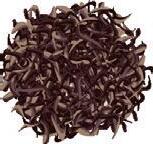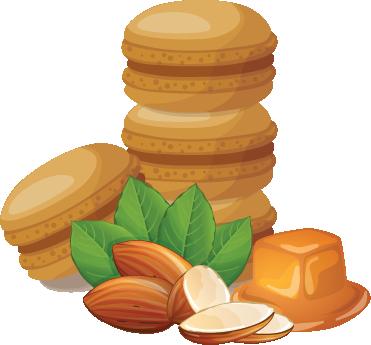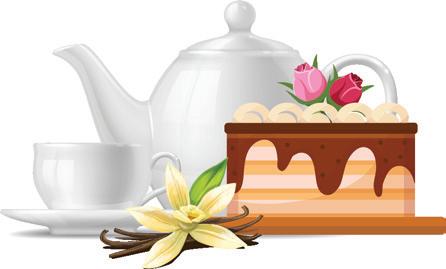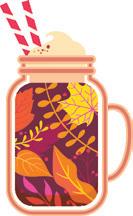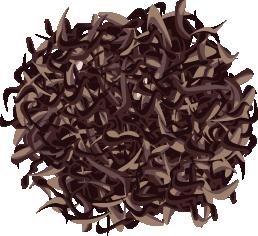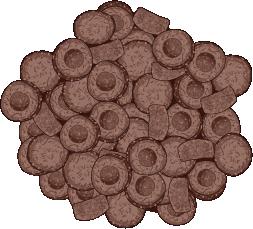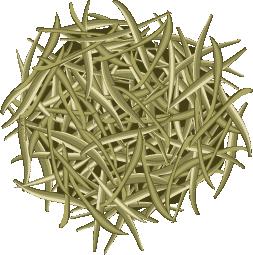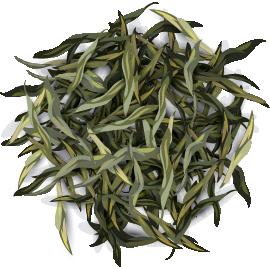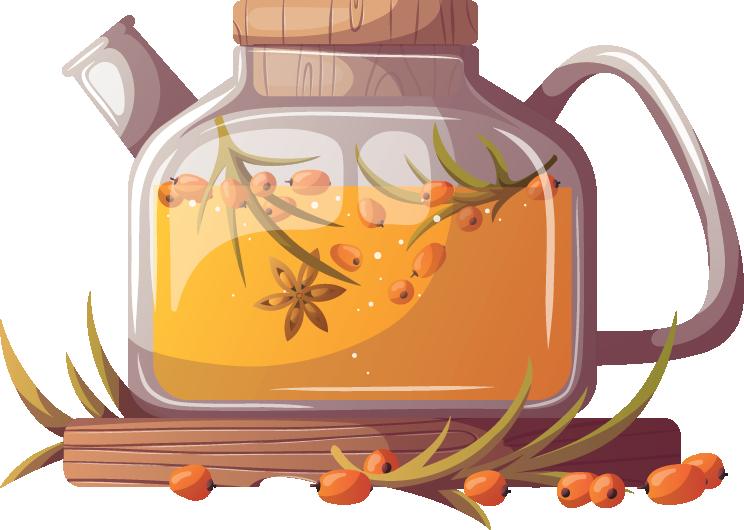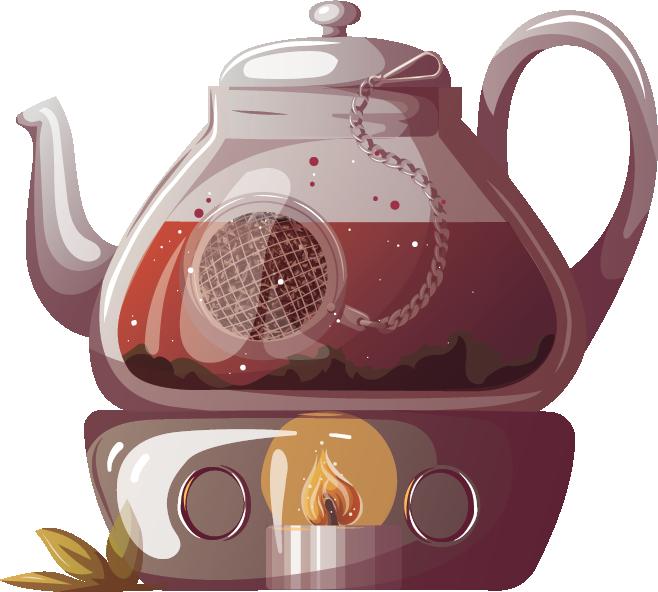Frequently Asked Questions
WHAT IS REAL TEA?
Real tea is the product made using the tender shoots of the ‘tea plant’. The botanical name of the tea plant is Camellia sinensis
Tea in its true sense is defined by the International Standards Organisation (ISO) as, “tea derived solely and exclusively, and produced by acceptable processes, notably withering, leaf maceration, aeration and drying, from the tender shoots of varieties of the species Camellia sinensis, known to be suitable for making tea for consumption as a beverage.”
WHAT ARE THE MAJOR TYPES OF REAL TEA?
Depending on the method of processing, different types of real tea are obtained as the final product. Major types of real tea are black tea, green tea, oolong tea and white tea. Black tea is fully fermented or aerated tea and green and white tea are non-fermented or non-aerated tea. Oolong tea is partially-fermented or partially-aerated tea (See chapter 2 for details on types of tea).
WHAT ARE THE DIFFERENCES BETWEEN ‘ORTHODOX BLACK TEA’ AND ‘CTC BLACK TEA’?
In black tea processing, either ‘orthodox’ or ‘CTC’ methods could be used for the rolling process. Products obtained from the two processes are referred to as ‘orthodox black tea’ and ‘CTC black tea’. Orthodox production method is used in Sri Lanka while the other two major black tea producing countries, India and Kenya, use the CTC method which produces tea, generally very uniform in taste. Orthodox processing allows for adjustments by the ‘tea maker’ to enhance the inherent character and taste of the tea. Production of volatile compounds and, therefore, aroma is generally better in orthodox black tea. Therefore, connoisseurs of tea prefer orthodox black tea, as it is better in quality and offers subtle variations to satisfy any consumer. Hence “Ceylon Tea” produced in Sri Lanka has a greater demand and also fetches higher prices.
WHAT IS MEANT BY GRADES OF TEA?
After processing, the major types of tea mentioned above are graded according to particle size. Orthodox black tea processing could produce up to 20 grades. Main grades are known as Orange Pekoe
(OP), Broken Orange Pekoe (BOP), Broken Orange Pekoe Fannings (BOPF) and Dust (D). OP has the largest particle size whilst Dust grade has the smallest particle size. CTC processing generally produces smaller particles and have a lesser number of grades. Main grades are Broken Pekoe (BP), Broken Orange Pekoe (BOP), Pekoe Fannings (PF) and Dust (D).
ARE GENETICALLYMODIFIED (GM) TEA PLANTS USED TO PRODUCE TEA?
At present, geneticallymodified tea plants are not used by tea producing countries. Therefore, it is free of any genetically-modified organisms (GMO). The Tea Research Institute of Sri Lanka has taken a policy decision not to produce any genetically modified tea varieties. Therefore, ‘Ceylon Tea’ will remain GMO free in the future too.
WHAT ARE HERBAL INFUSIONS (HERBAL TEA)?
In certain instances the term ‘tea’ is used to identify the products made from plants other than the tea plant (Camellia sinensis). According to the International Standards Organisation (ISO) definition, tea should be solely and exclusively derived from the
12
tea plant (Camellia sinensis). Therefore, the correct term for products made from other plants would be ‘Herbal Infusions’ or Tisanes. Chamomile, peppermint, hibiscus and rosehip are examples for herbal infusions.
WHICH HAS MORE HEALTH BENEFITS, HERBAL INFUSIONS OR REAL TEA?
Herbal teas are not produced from the tea plant (Camellia sinensis). Therefore, the effects of consumption of herbal teas are quite different to that of tea. Generally, a prefix (usually name of the plant), is used when referring to herbal teas (e.g. chamomile tea, peppermint tea, etc.) Unlike with real tea, effects of most herbal teas on human health have not been extensively studied. Large amount of research, especially human clinical trials on ‘real tea’ enables proper scrutiny of the results through systematic reviews, to arrive at correct and meaningful conclusions. However, when it comes to herbal teas the health effects announced are sometimes based on very few studies or a single study. The majority of these studies are generally either in vitro studies (carried out in a test tube), or animal model studies which cannot be extrapolated to predict what happens inside human body. Only very few human clinical trials have been conducted, making it difficult to arrive at meaningful conclusions on the effect of these on human health.
Although consumption of certain herbal teas could impart beneficial effects, it is very difficult to come to clear conclusions on the effect of regular consumption of herbal teas on human health on the basis of currently available knowledge. Therefore, it is prudent to restrict consumption of herbal teas to occasional use.
On the other hand, any type of ‘real tea’ made from the tender shoots of the tea plant (Camellia sinensis) could be considered as the most suitable beverage for regular consumption which is of proven health benefits to humans.
WHAT IS ‘CEYLON TEA’ AND WHY IS IT DIFFERENT FROM OTHER TEA?
Ceylon tea refers to tea produced in Sri Lanka (Ceylon is the name used for the country during the colonial era). Sri Lanka produces black tea and Ceylon black tea is considered qualitatively superior to tea produced in other countries. This perception is reflected in the higher prices obtained for Ceylon tea at the tea auctions.
Over the years the country has focused attention on producing teas of the highest quality. Major reasons for the better quality of Ceylon tea are the following:
ɇ climatic and weather conditions that prevail in the tea-growing regions
ɇ the unique variations of climatic conditions between
sub regions of tea-growing areas,
ɇ unique tea varieties developed for plantations in these sub regions
ɇ manual harvesting which allows the selection of the most suitable shoots
ɇ orthodox processing method used, which permit changes to enhance the natural taste and aroma of the tea
These factors, in combination, enables Sri Lanka to produce different types of tea that would satisfy the taste preferences of any consumer in the world.
WHAT MAKES TEA A HEALTHY BEVERAGE?
The major water soluble components in tea are known as polyphenols. Scientific research has demonstrated that plant polyphenols could produce beneficial effects inside the human body. Whilst all plants contain polyphenols, the uniqueness of tea is that it contains very high amounts (as much as 40% of water soluble components) of polyphenols. In addition, caffeine and theanine in tea also contribute to beneficial effects. Caffeine could make an individual alert and give relief from fatigue, while theanine could give a relaxing mood. Both caffeine and theanine, a combination found only in tea, could improve the performance of an individual while in a relaxed mood.
13
A large number of scientific research studies have been carried out on the effects of tea brew and individual components of tea, on human health. These studies have demonstrated that regular tea consumption could improve human health. These effects are discussed in detail in the relevant chapters of the book.
ARE THE HEALTH BENEFITS OF BLACK AND GREEN TEA SIMILAR?
The main difference between black tea and green tea is that green tea contains catechin as the main type of polyphenols, whilst in black tea these are converted to theaflavin and thearubigins. All the other components are similar in both types of tea. Large number of research studies have been carried out on the health benefits of black and green tea brews and their individual components. Review of the results of these studies indicate that both types of tea have similar health benefits.
However, the number of research studies on green tea are far greater than that of black tea. The reason is that most of the research studies on tea have been carried out in Japan and China, which produce green tea. Green tea has been used for these studies, resulting in a greater number of publications on the beneficial effects of green tea, than the number of publications on the beneficial effects of black tea. Therefore, there is a perception among some
that green tea is better than black tea for human health. However, more recently, a large number of research studies have been carried out on the health benefits of both black and green tea in non-tea producing countries. The results of these studies indicate that black and green tea have similar health benefits.
IS THERE A DIFFERENCE IN HEALTH BENEFITS BETWEEN COLD BREWED TEA AND HOT BREWED TEA?
Health benefits of tea depend on the amount of beneficial components extracted into the cup. Cold brewing results in reduced extraction of these beneficial components. Therefore, beneficial effects of a hot brewed tea would be more compared to a cold brewed tea. Generally, commercially-available Ready to Drink Tea, which is intended for use as a cold beverage, also contains a diluted solution compared to a hot cup of tea. Therefore, health benefits from a traditional hot cup of tea would be comparatively high.
DOES THE ADDITION OF MILK AND SUGAR REDUCE THE HEALTH BENEFITS OF TEA?
Addition of milk and sugar does not alter the health benefits provided by the tea components. However, diabetic patients should monitor the amount of sugar consumed. Further, addition of either sugar or milk will add calories to the cup of tea,
which contains almost zero calories. Calorie conscious individuals should take note of this fact.
DOES TEA HAVE A DIURETIC EFFECT AND THEREFORE LEAD TO FLUID LOSS FROM THE BODY?
Caffeine in tea is a mild diuretic (diuretics increase the volume of urine). Therefore, in the past there was a concern that tea drinking could lead to water loss from the body. Recent research has established that the amount of caffeine found in tea does not lead to a significant increase in the volume of urine. Therefore, tea drinking does not lead to fluid loss from the body. The amount of water in a cup of tea actually contributes to the hydration (supply of water) of the body. Therefore, tea could be used to obtain part of the fluid requirement per day.
WHAT IS CAFFEINE AND WHAT ARE THE AMOUNTS OF CAFFEINE IN TEA?
Caffeine is the central nervous system stimulant present in tea. After consumption, caffeine makes a person alert and it also relieves fatigue. Therefore, a cup of tea could refresh a person especially if the person is tired.
A typical high quality cup of tea contain approximately 40-50 mg of caffeine although the range could vary between 20 to 90 mg. The higher amounts of caffeine in high quality tea is due to proportionately higher
14
amounts present in the bud, as compared to the first leaf. Caffeine content declines with leaf maturity, therefore, the second leaf would have lower amounts of caffeine than the first leaf. As high quality teas have higher proportions of bud and the first leaves, the caffeine content in high quality tea would be comparatively higher.
ARE THE CAFFEINE LEVELS IN BLACK, OOLONG, GREEN AND WHITE TEA THE SAME?
Generally, the cultivars used for green tea processing contain lower levels of caffeine than in cultivars used for black tea processing. Therefore, green tea could contain relatively less amounts of caffeine. However, there could be exceptions as many other factors, such as plucking standards, also influence caffeine levels.
Oolong tea could be produced using cultivars intended for both green tea and black tea production. Therefore, oolong tea could contain varying amounts of caffeine.
White tea is generally produced using only the buds. As bud contains the highest amount of caffeine compared to the leaves (caffeine content decreases with leaf maturity), white tea would contain higher amounts of caffeine.
WHAT ARE THE SAFE LEVELS OF CAFFEINE FOR CONSUMPTION?
There have been many scientific reviews on the
caffeine safety and maximum levels, that should be ingested per day. According to the most comprehensive review, carried out by the European Food Safety Authority (EFSA) in 2015, single doses of caffeine up to 200 mg (about 3 mg/kg body weight for a 70-kg adult) do not result in any negative effects. Further, habitual caffeine consumption up to 400 mg per day also does not result in any negative effects in adults.
WHAT ARE SAFE LEVELS OF CAFFEINE FOR PREGNANT AND LACTATING MOTHERS?
Caffeine could pass through the placenta of a pregnant mother to the foetus. Therefore, there are concerns about using caffeinated beverages during pregnancy. The EFSA report has found that only very high doses of caffeine, which could not be achieved by consuming tea, could have an effect on the foetus. However, as a precaution, they have recommended restricting daily caffeine intake to 200 mg per day during pregnancy. Further, caffeine could pass from lactating mothers to the baby. Therefore, the EFSA report advice to restrict caffeine intake for lactating mothers also to 200 mg per day.
WHAT ARE THE SAFE LEVELS OF CAFFEINE FOR CHILDREN?
EFSA report has recommended the maximum intake of caffeine for children, as 3 mg/kg of body weight,
which also is the maximum intake recommended for adults in one sitting. The weight of the child has to be taken into account when calculating the maximum intake of caffeine per day for children. For example, a child with 50 kg body weight could consume a maximum of 150 mg of caffeine per day (3 mg/kg body weight x 50 kg), which is equivalent to 3 cups per day.
WHAT IS DECAFFEINATED TEA?
De-caffeinated teas are intended for individuals with a sensitivity to caffeine. Caffeine has been removed in the decaffeinated teas. However, small amounts (< 6 mg) of caffeine could still remain in de-caffeinated tea.
WHAT IS THEANINE AND WHAT ARE THE BENEFICIAL EFFECTS OF THEANINE?
Theanine is a unique nonprotein-forming amino acid. The tea plant is the only agricultural crop that contains theanine. Therefore, theanine is not present in any other plant based food or beverage except tea. Tea leaves contain 1-2% of theanine on a dry weight basis.
Scientific experiments have demonstrated that theanine ingestion increases the alpha wave production in the brain, which indicates that the brain is in a relaxed state. Further, alpha waves indicate that the alertness is not reduced and that the individual is not drowsy.
15
In addition, research has shown that theanine has a neuro-protective effect and also acts as a cognitive enhancing agent. (Cognition is the mental action or process of acquiring knowledge and understanding through thought, experience, and the senses.)
Theanine has an effect on the attention level/awareness of an individual and therefore, results in better performance when a particular task is given. Further, theanine was found to reduce anxiety and stress, thus inducing relaxation. Owing to these effects theanine in tea was found to improve the creative problem solving ability of individuals. Therefore, overall, theanine in tea would both relax the individual and improve performance.
In addition, recent research has demonstrated that theanine reduces anxiety, stress and improves sleep quality.
IS TEA GLUTEN FREE?
Gluten is a protein composite found in wheat and related grains, including barley and rye. It is not present in tea.
IS TEA LACTOSE FREE?
Lactose is a sugar derived from milk. It is not present in tea.
IS TANNIC ACID PRESENT IN TEA?
Tannic acid is not present in tea. Tannins are plant polyphenolic compounds which could be used for the tanning process (conversion of raw hide into leather). In the past, structures of most polyphenolic compounds in plants had not been identified. Therefore, in certain instances, all plant polyphenols had been referred to as tannins although some, including tea polyphenols, did not possess the tanning ability. However, structures of most plant polyphenols have now been identified and named (e.g. catechins, thearubigins and theaflavins in tea). Therefore, generally at present, the word tannin is not used for plant polyphenols.
HOW MUCH THEOPHYLLINE, A COMPOUND KNOWN TO HAVE AN EFFECT ON EASING ASTHMA, IS CONTAINED IN A CUP OF TEA?
Theophylline is an alkaloid which acts as a mild bronchodilator, or causes widening of the bronchi (airways in the lungs), thus giving alleviation from asthma. In brewed tea, trace amounts of theophylline is present, which are significantly less than a therapeutic dose. Tea has classically been used to treat mild asthma and bronchitis. Although other potent anti-asthma medications are available with more therapeutic benefit, tea may be beneficial for mild respiratory problems and is safe even for children. But
tea should not be used as a medication for asthma.
Both black and green tea contain similar amounts of theophylline.
ARE THERE ANY ALLERGENS IN TEA?
Tea does not contain any known allergens. Therefore, tea consumption does not lead to allergies.
DOES TEA AFFECT IRON ABSORPTION FROM THE DIGESTIVE TRACT?
Tea does not affect the absorption of iron, known as “haem iron,” found in meat and fish, However, tea could affect the absorption of iron from plant sources (vegetables and fruit) known as ‘non haem’ iron when they are present together in the digestive tract. If the diet is rich in meat or fish which contain relatively high amounts of iron, meal-time tea drinking would not affect the iron status in the body. However, if the diet is mainly vegetarian and already marginally deficient in iron (it should be noted that vegetarian diets also could be rich in iron), tea should be consumed either 1 ½ hours before or after meals.
WHY DOES TEA CLOUD WHEN IT IS COOLED?
Clouding in tea is a result of the colloidal precipitate that is formed, called ‘tea cream’. Tea creaming takes place when a hot cup of black tea is cooled below 400 C. A weak
16
complex is formed between caffeine and polyphenols (theaflavins and thearubigins). The tendency to cream down varies from tea to tea. If the creaming down is high, that particular tea is regarded as high quality tea.



























WHAT IS TEA SCUM OR THE DARK SKIN ON TOP OF THE BREWED TEA?

Scum formation is due to the presence of high amounts of calcium in the water (hard water) used for brewing tea. Therefore, scum formation could be avoided by using soft water for brewing. Further, it should be noted that tea scum is not harmful to human health.


HOW SHOULD TEA BE STORED TO RETAIN FRESHNESS?

Tea should be stored in a cool and dry place, in an air tight container made out of suitable barrier material, away from light sources and heat, preferably in a refrigerator.
Tea being a hygroscopic substance readily absorbs water from its surroundings. Tea quality deterioration on storage was found to accelerate with high relative
humidity and heat and it is for this reason that storage in cool and dry conditions is essential. Further, tea could absorb volatile compounds (that gives a smell) from the surroundings. Therefore, it should not be stored together with other, odorous food items,

WHAT ARE THE NUTRITIONAL BENEFITS OF TEA?




Major Nutrients in Tea

Major nutrients in the diet are carbohydrates (starch and sugar), proteins and fat. These



are required as fuel for energy production and as ‘building blocks’ in maintaining the structural integrity of the human body. Tea provides only negligible amounts of these major nutrients and therefore calorific value of tea is very low. This is an advantage in the present-day context as a large proportion of the global population exceeds the recommended daily calorie intakes. A plain cup of tea between main meals, without any snacks, could significantly contribute to the restriction of the daily calorie intake and limit weight gain.

17
Minerals and Vitamins in Tea
Minerals and vitamins are the other important nutrients. Mineral content in tea and the recommended daily intakes are given in the table below. Low sodium content is a notable feature of tea. High sodium increases the risk of high blood pressure and therefore most countries have started salt (salt is sodium chloride and the harmful element in it is sodium) reduction programmes for their
populations, as it has been found that a large proportion of the global population exceeds the recommended salt intake. Therefore, tea would be an ideal beverage to reduce the risk of high blood pressure.
Three cups of tea provide approximately 5% of the daily requirement of thiamine and folate (which are components of the vitamin B family). Tea contains varying amounts of other vitamins also. However, their contribution to the
Source: USDA National Nutrient Database for Standard Reference Release 28: Report
Date:January 25, 2016 *DRI - Dietary reference intakes, US Nutrient recommendations, Source: National Institute of health, Office of dietary supplements, *ND - Not defined
18
Black Tea Green Tea 100 ml of brewed tea 1 cup of brewed tea (240 ml) 100 ml of brewed tea 1 cup of brewed te (240 ml) DRI* DRI* Adult male Adult female Nutrients Energy kcal 1 kcal 2 kcal 1 kcal 2 kcal 2600 kcal 2200 kcal Protein (g) 0.2 0.5 0.2 0.5 56 46 Lipids (g) 0 0 0 0 <30% of total calories <30% of total calories Ash (g) 0.04 0.09 0.04 0.09 ND* ND* Carbohydrates Total (g) 0.3 0.7 0.3 0.7 130 130 Sugar (g) 0 0 0 0 <10% of total calories <10% of total calories Dietary Fibre (g) 0 0 0 0 38 25 Minerals Calcium (mg) 0 0 0 0 1000 1000 Iron (mg) 0.05 0.12 0.05 0.12 8 18 Magnesium (mg) 7 16.8 2 4.8 420 320 Phosphorous (mg) 2 4.8 0 0 700 700 Potassium (mg) 88 211.2 20 48 4700 4700 Sodium (mg) 7 16.8 2 4.8 1500 1500 Zinc (mg) 0.05 0.12 0.02 0.05 11 8 Copper (mg) 0.02 0.05 0.01 0.02 0.9 0.9 Manganese (mg) 0.5 1.2 0.45 1.1 2.3 1.8 Selenium (mg) 0 0 0 0 0.055 0.055 Other Constituents Caffeine (mg) 20 48 12 30 Max 400 Max 400 Catechins (mg) 27 66 324 777 ND* ND* Theaflavins (mg) 4 11 0 0 ND* ND* Thearubigins (mg) 81 195 8 19 ND* ND*
recommended daily intakes is not significant.
DOES TEA CONSUMPTION HAVE AN EFFECT ON INFLAMMATION?
Inflammation is a part of the response by the human immune system against pathogens, toxic substances or injury. Through a series of steps referred to as immune response, the immune system attacks the organisms and other toxic substances that invade the body and cause disease. During injury also the immune system is activated to prevent the entry of harmful micro-organisms and other harmful substances. Some of these reactions result in inflammation. Signs of inflammation are heat (rise in body temperature), redness, swelling, pain and change in blood composition.
Although essential, excessive or prolonged inflammation could damage the human body and increase the risk of Non-Communicable Diseases, such as heart disease, stroke and diabetes. Therefore, it is important that inflammation is controlled quickly, once the responsible agent is eliminated. Further, exposure to environmental toxins and toxicants such as smoke, dust particles, pesticides, mycotoxins, polychlorinated biphenyls (PCBs) and toxic metals could also trigger inflammation. As exposure to such agents are common in the present-day environment, anti-inflammatory compounds derived from the diet could play an important role in
mitigating the adverse effects of inflammation.
Scientific research has found that tea polyphenols have anti-inflammatory properties, without compromising the role of the immune system. Therefore, tea consumption could mitigate the adverse effects of inflammation. During inflammation, the production of free radicals and other harmful substances take place in the human body, to combat invading pathogenic micro-organisms. However, prolonged presence of these harm the human body itself. Antioxidants in tea could neutralise these free radicals and harmful substances, and reduce the adverse effects of inflammation, thus reducing the risk of Non-Communicable Diseases such as heart disease, stroke and diabetes, where the development of the disease is associated with inflammation.
DOES TEA CONSUMPTION HAVE AN EFFECT ON DIABETES?
Regular consumption of tea could have an effect on Type 2 diabetes (90% of the diabetes is of this type) through several mechanisms. Research reveals that tea consumption could reduce the glucose absorption into the body from the digestive tract, especially from carbohydrate rich food. Type 2 diabetes is mainly caused by the ineffectiveness of insulin, the hormone that controls blood glucose, rather than inadequate production of insulin. Tea flavonoids have
the ability to increase the effectiveness of insulin.
Tea consumption could also have indirect effects on diabetes through the lowering of inflammation and obesity. These two are the main risk factors for diabetes and they also contribute to increased diabetic complications.
Population studies on tea consumption and risk of diabetes, in which very large populations who consume tea are compared with a control population with similar lifestyles, also reveal that tea consumption could reduce the risk of Type 2 diabetes.
DOES TEA CONSUMPTION HAVE AN EFFECT ON HEART DISEASE AND STROKE?
Heart disease and stroke are the leading causes of death in the world at present. Narrowing of arteries due to plaque formation could restrict the blood supply to the heart and brain. Complete blockage of the already narrowed arteries due to blood clots cause heart attacks and stroke. Several risk factors are involved in the plaque formation in the arteries. The risk factors include high cholesterol and fat levels in blood, high blood pressure, diabetes, oxidative stress, inflammation and factors that favour blood clotting.
Detailed research on tea consumption and the above risk factors, have revealed that flavonoids in tea have the ability to reduce the effects of these risk factors.
19
In addition, epidemiological studies carried out in several countries, where large numbers of individuals from populations have been followed for a long period of time, have revealed that regular tea consumption could reduce the risk of heart disease and stroke. As plaque formation is a slow process taking several years, individuals could adopt healthy lifestyles and diets that reduce the risk. Regular tea consumption could be a part of a heart healthy diet.
DOES TEA CONSUMPTION HAVE AN EFFECT ON CANCER?
Cells are the smallest units or building blocks of tissues and organs in the human body. Alterations in the cells could result in abnormal cells, with uncontrolled proliferation, leading to the formation of cancerous tissue. Alterations in the cells are initiated by damage to DNA in the cells, which control all cellular processes. The damage is usually caused by carcinogenic substances or harmful radiation, such as UV light. Research has demonstrated that flavonoids in tea has the ability to neutralise cancer causing substances, and reduce the risk of cancer initiation. Harmful radiation causes the formation of potential carcinogenic substance in the human body. Tea flavonoids have the ability to neutralise these harmful substances also.
Once cancer is initiated in a cell, it develops into a
malignant cancerous tissue through several stages. Research has also shown that tea flavonoids could interfere with these processes through several mechanisms, and reduce the risk of formation of a malignant cancer.
Metastasis is the process, where cells from a malignant cancer migrate to other parts of the body, through the blood circulatory system, and establish a cancer in another part of the body. Metastasis greatly diminishes the effectiveness of conventional cancer therapy. Research has also shown that tea flavonoids reduce the risk of metastasis.
In addition, a review of a large number of population studies, where cancer patients and healthy individuals with similar lifestyles were compared, to identify the factors that influence the carcinogenesis process, has revealed that tea consumption reduces the risk of cancer.
DOES TEA CONSUMPTION HAVE AN EFFECT ON ORAL AND DIGESTIVE TRACT HEALTH?
The human digestive tract consists of the oral cavity, pharynx, oesophagus, stomach, small intestine and large intestine and other related organs, that work together, through the digestion process, to convert food into basic nutrients that could be absorbed into the body. Large populations of microorganisms live in all parts of the digestive tract. Some of these microorganisms are beneficial
to the humans while some others are harmful.
‘Commensal microorganisms’ that live in the digestive tract are neither harmful nor beneficial to the humans. Different dietary items have different effects on these microorganisms.
Some dietary items known as ‘prebiotics’ could increase the beneficial microorganism populations. Choosing such dietary items for regular consumption would contribute to improve the overall health of the individual. A large number of research studies have been carried out to find the effect of tea consumption on the microorganism populations in the digestive tract. Review of results from these studies reveal that regular tea consumption results in the reduction of harmful microorganism populations, whilst increasing the beneficial microorganism populations.
Main effects observed due to this activity are, improvement of oral health by reducing tooth decaying bacteria. In addition, high fluoride content in tea helps in the incorporation of fluoride into the teeth, making it more resistant to toothdecaying bacteria. Tea also has the ability to reduce the population of organisms such as Candida, which cause inflammation of the oral cavity (oral candidiasis).
The presence of large populations of harmful micro-organisms, such as Helicobacter pylori in the stomach and intestines,
20
significantly contribute to the development of gastritis and peptic ulcers. These ulcers have the potential to develop into cancers. Research has demonstrated that regular tea consumption could reduce the populations of harmful micro-organisms, including Helicobacter pylori, thus reducing the risk of development of gastritis, peptic ulcers and cancer in the digestive tract.
DOES TEA CONSUMPTION HAVE AN EFFECT ON THE BRAIN FUNCTION AND MOOD?
Caffeine and theanine in tea are the constituents that have an effect on the central nervous system. Caffeine is a well-known stimulant that could make you alert and relieve fatigue. Theanine also has effects on the central nervous system, mainly to induce relaxation. Caffeine is known to stimulate a person and improve his performance and also improve the speed of carrying out a given task. Recent research has found that theanine also has similar effects and, together, theanine and caffeine have synergistic effects. Therefore, tea, the only beverage in which both caffeine and theanine are present together, could improve performance, whilst keeping a person in a relaxed mood. Therefore, tea is an ideal beverage to refresh a person, as well as to prepare him for work.
Further, polyphenols and caffeine in tea may have protective effects against
dementia and Alzheimer’s disease, as they could play a role in reducing neurodegradation and amyloid plaque formation in the brain.
DOES TEA CONSUMPTION HAVE AN EFFECT ON WEIGHT LOSS AND OBESITY?
Worldwide, obesity has more than doubled since 1980 and become an important global health issue. Excess weight and obesity are major risk factors for a number of chronic diseases, including diabetes, cardiovascular diseases and cancer. Therefore, any measures that could be used for weight reduction would be very important.
Research has demonstrated that tea consumption could contribute to weight loss and weight maintenance. A cup of tea, without milk or sugar, contains almost zero calories. Therefore, consumption of a cup of plain tea between main meals, instead of any other snacks, would significantly contribute to weight maintenance. Further, research had shown that tea consumption could contribute to weight reduction through many other mechanisms. These include reduced fat absorption from the diet, alterations in fat metabolism resulting in lower storage of fat and increased energy expenditure resulting in increased use of fat. Many
human clinical studies and population studies involving a large number of individuals have also confirmed that tea consumption contributes to lowering obesity and weight maintenance.
EFFECT OF TEA ON CELIAC DISEASE
Celiac (Coeliac) disease (gluten-sensitive enteropathy), is an immune reaction to gluten, a protein found in wheat, barley and rye. In celiac disease patients, consuming gluten containing food triggers an immune response in the small intestine. Over time, this reaction damages small intestine’s lining and prevents it from absorbing some nutrients (malabsorption). The intestinal damage often causes diarrhea, fatigue, weight loss, bloating and anemia and can lead to serious complications.
Although tea possesses antiinflammatory properties and could reduce ‘oxidative stress,’ which processes are involved in the aetiology of celiac disease, until recently the effect of tea on celiac disease has not been evaluated. Digestion of gliadin (which is a component of gluten) results in the production of immune-stimulatory peptides which initiate immune response in the small intestine. A recent study has found that green tea extract inhibited gliadin digestion, thus reducing the risk of celiac disease. Further, it has been
21
found that tea catechins could ameliorate the tissue damage in the intestine. Although not conclusively proven yet, tea appears to ameliorate the effects of celiac disease. Therefore, probably, tea could be included in a diet aimed at celiac disease patients.
DOES FLAVOURED TEA HAVE THE SAME HEALTH BENEFITS AS NONFLAVOURED TEA?
Flavoured teas are produced by adding a flavour to tea. Generally very small quantities of flavour are added to tea and in preparation of a cup of tea similar quantities of tea is used. Therefore, flavoured tea has the same health benefits as non-flavoured tea.
IS TEA AN ADAPTOGEN?
Recently health conscious individuals have focused their attention on adaptogens. Adaptogens are defined as natural substances that can help us to adapt to stress and anxiety. In addition, they may relieve fatigue whilst promoting overall wellbeing. Research has shown that theanine in tea could reduce stress and anxiety. Caffeine in tea relieves fatigue (see chapter 13 for details). Further, research has shown that tea consumption could reduce the risk of major Non-Communicable Disease and improve the wellbeing of an individual. Therefore,
tea is a natural beverage that possesses all the qualities of an adaptogen.
CAN TEA BE TAKEN ON AN EMPTY STOMACH IN THE MORNING?
Healthy individuals can consume a cup of tea on an empty stomach. In fact, a large percentage of world population start its day with a cup of tea and thoroughly enjoys it. However, there could be individuals who will feel uncomfortable with any beverage on an empty stomach. Acid secretion in the stomach is the main cause for this. When we consume any food item or beverage, acid will be secreted in the stomach, as part of the digestion process. This might cause discomfort in a small percentage of individuals and an empty stomach would aggravate the sensation. The addition of milk and sugar to tea is known to minimise acid secretion and such individuals could try that. Another option is to try different types of teas, such as lighter liquoring teas (lighter in colour), to find a tea more suitable to people with such sensitivity.
Although tea induces acid secretion in the stomach, research has proven that regular consumption of tea can reduce the risk of chronic gastritis. (see chapter 12 for more details)
HOW TO BREW A PERFECT CUP OF TEA
The preparation of a cup of tea is very important, to get the best quality out of the tea used. Important elements in preparing a good cup of tea are
ɇ Quality of tea used
ɇ Quality of water used
ɇ The brewing technique.
SELECTION OF TEA
Tea could be selected based on individual taste preferences. To a discerning consumer, the method of plucking and processing of tea would be important criteria to consider when choosing the tea. Hand plucking of tea ensures the selection of the most tender parts for processing and orthodox processing ensures the enhancement of the inherent character of tea.
Orthodox processing also enables the differentiation of subtle variances between processing centres and the production of a wide spectrum of tea types, each different from the other, providing the consumer with a very wide choice. Approximately 2.5 g or a spoonful of tea in a pot should be used to prepare a single cup of tea.
22
STORAGE OF TEA

Tea is hygroscopic (readily absorbs moisture) and, similarly, absorbs odours or fragrances. Therefore, after opening a pack, tea should be stored in an airtight container and kept away from moisture, heat, light and odours. It should be stored in a cool and dry place.
When purchasing, consumers should also pay attention to the packaging of the tea. Packaging should be airtight and the packaging material should be able to exclude light and odours. Triple laminated aluminium foil with such properties is the commonest packaging material for tea. When made tea comes out of the processing factory, the moisture content is around 3-4%. Prolonged storage in bulk form and operations such as blending in the open could result in the increase in the moisture level and the deterioration of tea. Therefore, teas packed at origin generally reach the consumer without any deterioration.
WATER
Fresh, colourless and odourless water, just brought to boil, should be used for brewing. Soft water (containing 10 -120 mg/L of calcium and magnesium) with pH close to neutral is best i.e. pH = 7 (pH 6 to 8 is suitable). Re-boiled water should not be
used for brewing, as repeated boiling removes most of the dissolved air, affecting the taste.

Chlorinated tap water could affect the taste of tea. Therefore, if either taste or odour indicates the presence of chlorine, such water should not be used for preparation of tea.
BREWING BLACK TEA
Approximately 2.5g, or a spoonful of tea should be used per cup of tea. Tea should be placed in a preheated tea pot (tea pot could be pre-heated by swirling in warm water) and freshly boiled water should be added to the pot. When water is brought to boil, it should be immediately added to the pot without delay, so that the water temperature is not reduced by the time it is added to the pot (95-100°C).
Allowing adequate time for extraction with intermittent stirring is very important. Three to five minutes is required for extracting all the components into the brew from a good quality tea. If the particle size of tea is large five minute brewing is required, whilst for smaller particles, three minutes is adequate. Shorter brewing times will result in an inferior cup of tea.
Stirring enhances the
extraction process. Therefore, with black tea, stirring immediately after pouring the boiling water, and stirring after brewing for one minute, and stirring again before serving, results in enhanced extraction and a better cup of tea.
BREWING GREEN TEA
When brewing green tea, generally lower temperatures (70-80°C) and shorter duration of brewing (2-3 minutes), is more suitable.
BREWING SPECIALITY TEA

For speciality teas, different brewing conditions might be required to obtain the best cup. In such instances the manufacturer’s recommendations should be followed.


* For references please refer to Dilmah Tea & Your Health Book (link on page 7)



78929 00 Dilmah Family Tea Central online web portal www.dilmahtea.com Dilmah Dilmah dilmahceylontea DilmahRealTea



